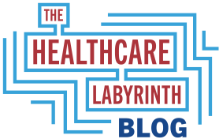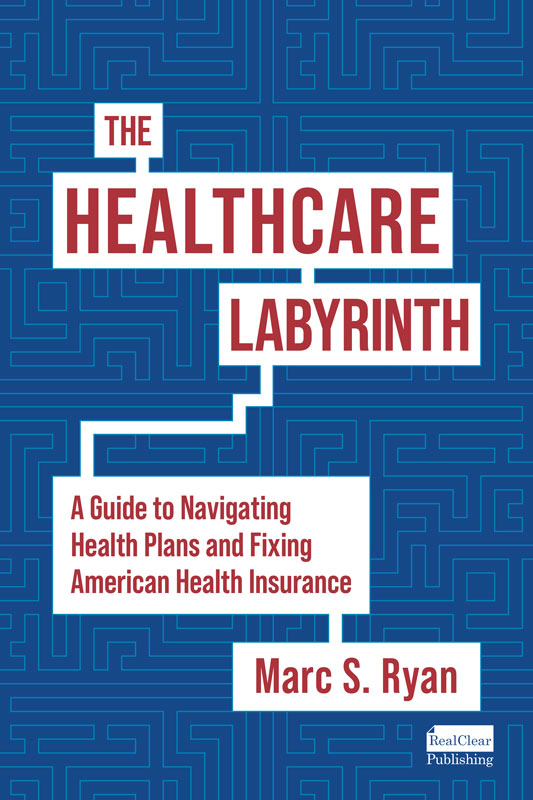Will Democrats successfully tar Republicans with budget bill healthcare cuts?
Democrats are gearing up for the 2026 midterm elections and they think they have a crucial issue to help them win back control of at least one house of Congress – despite their political meltdown this past year. The hapless Democrats see the budget reconciliation cuts to healthcare as a pivotal issue to swing at least some control back to their party.
Politics is more predictable than fickle. I looked at every midterm election since 1934. If I have this right, only on two occasions has the party in control of the White House gained seats in both houses at midterm elections. A third midterm sort of meets the test.
In 1934, the Democrats under Franklin Delano Roosevelt gained 9 seats in each house. In 2002, George W. Bush’s Republicans gained 8 seats in the House and 2 in the Senate. Bill Clinton sort of makes the list in 1998. His Democratic Party gained 5 seats in the House and maintained numbers in the Senate. In each of these cases, some major event was occurring: (1) the Great Depression; (2) the 2001 terrorist attacks; and (3) the impeachment attempt on Clinton.
If you look at gaining membership in one house, the results show the following:
- John F. Kennedy – 1962 – Lost 4 in House; Gained 3 in Senate
- Richard Nixon – 1970 – Lost 12 seats in House; Gained 2 in Senate
- Ronald Reagan – 1982 – Lost 26 seats in House; Gained 1 in Senate
- Donald Trump – 2018 – Lost 40 seats in House; Gained 2 in Senate
- Joe Biden – 2022 – Lost 9 seats in House; Gained 1 seat in Senate
In these 23 midterms, 12 presidents had popularity over 50% and just in 5 midterms did the president’s party gain seats in 1 or more houses.
In sum, the power of White House incumbency is not strong in midterm elections. That creates a challenge for Republicans controlling both houses of Congress after the 2026 midterms. It is not impossible, but it would certainly buck historical trends, especially given the very tight margins in each house.
In the House, Republicans have 220 votes of 435. The Democrats have 212, with three strongly Democratic seats with vacancies today. Losing three seats overall in 2026 would move control to the Democrats. And betting odds suggest that historical trends push the House back to Democratic hands.
In the Senate, Republicans control the chamber 53-47. Here the GOP looks likely to maintain control. There are six or seven competitive races of 35 up for election. And here is my take on the seats right now.
- Michigan (D) — Toss Up
- North Carolina (R) — Toss Up
- Georgia (D) — Toss Up
- Maine (R)– Leans Republican
- Ohio (R) – Leans Republican
- Minnesota (D) – Leans Democrat
- New Hampshire (D) – Leans Democrat
As of now, the best case for Republicans in the Senate is they have a 55-45 hold on the upper chamber – maintaining all their current seats and winning Georgia and either New Hampshire or Michigan. Worst case, the GOP controls the Senate 51-49, with Democrats maintaining their current seats and gaining North Carolina and Maine. The likely range is 52 to 53 seats for the Republicans. Ohio should stay GOP. Susan Collins usually defies all odds given her independent streak. She trailed in the polls in the closing weeks of the 2020 election, only to win by over 9 percentage points in the end. Collins voted no on the budget bill. North Carolina has been voting increasingly Republican, but the seat is open with Republican incumbent Thom Tillis’ decision not to run for re-election. Former moderate Democratic Gov. Roy Cooper is thinking about running and would be a formidable opponent for any Republican.
But will the budget reconciliation vote drive more seats to Democrats?
Here are some important toggles that could determine the outcomes of the midterms:
Hard To Buck History: Election history alone would suggest Democrats regain the House, especially with the tight numbers in the House right now. A swing of three seats turns it back over to Democrats.
Rudderless Democrats: Latest polls suggest that the American public has little faith in the Democratic Party. Many Democrats and independents see the party as rudderless. This could certainly impact the party’s performance next year unless new leaders are identified and issues galvanized. If President Trump’s approval rating – it is never much higher than the high 40s – remains reasonably strong and the economy performs well, could the GOP buck the historic trends and maintain House control due to the Democratic Party’s standing?
The Budget Reconciliation Vote And Healthcare Cuts: Whether Democrats get their new leader and a true action plan in time, Democrats see the budget reconciliation vote as a rallying cry for their party. The party itself and through surrogate political action committees (PACs) are cutting digital ads talking about the fallout in healthcare. These ads target vulnerable Republican districts and swing states.
The Trump campaign saw a massive swing of certain demographics and swing state voters move to the Republican column in 2024. Will these voters sour on Trump and the Republicans and view the bill as broken promises on healthcare? The bill does seem to have major impact on converted voters who rely on Medicaid and the Exchanges for healthcare coverage. The Democrats will hammer home the impacts to coverage, estimated to be up to 17 million as the reductions roll out. Republicans will indicate that the reforms are sound and simply mean to stop improper and fraudulent enrollment.
I would predict that Democrats will have more success than not on the issue. In 2018, Republicans lost 40 seats in the House in part due to effective campaigning by Democrats on failed efforts by Republicans to repeal the Affordable Care Act (ACA). In 2026, Democrats can point to actual cuts that are occurring. Republicans tried to phase-in the cuts so as to escape some of the blame for coverage losses in 2026. But there will be some and Democrats will try to capitalize on this. Consider the rollout of reductions.
- Expiration Of Enhanced Premium Subsidies – these COVID-era enhancements go away at the end of 2025. The Congressional Budget Office (CBO) says the expiration alone could mean a loss of coverage for 4.2 million Americans. The Republicans did not actually cut the subsidies. They expired because Democrats did not make them permanent when they were in control. But Democrats will seek to tag Republicans for the expiration. There is no question that the enhancements led to millions coming into the Exchanges. Latest insurance filings in states suggest premiums will skyrocket and many plans are backing out of certain states or providing coverage entirely. This fallout will be seen right away – the beginning of 2026.
- The Trump Exchange Eligibility Rule – Democrats will also try to blame Republicans for a new Exchange rule that reduces open enrollment, pulls special enrollment periods, and more. The CBO says this rule leads to about 900,000 losing coverage. Republicans argue the Biden-era policies went too far and promoted fraud and abuse in the program.
- Major Budget Cuts With Impact Before Midterms – Democrats will seek to leverage some or all of these reductions to paint Republicans as uncaring. Again, the Republicans will argue the reductions are aimed simply at rooting out fraud and abuse and improper enrollment in social benefits programs. The list of reductions prior to the midterms is somewhat limited, although states could begin planning and passing legislation for limits on provider taxes and state-directed payments. Tighter Exchange rules could also resonate. And on PAYGO, the Senate would need 60 votes to override the sequestration.
- Limits on immigrant enrollment in healthcare programs
- Certain provider tax limitations, although states have three years to come into compliance
- Limits on state directed payments
- Tighter eligibility checks in Exchanges and enrollment restrictions
- Repaying full amount of excess subsidies granted
- Possible Medicare PAYGO sequestration up to 4% beginning in 2026
- Major Budget Cuts Post Midterms – It will be harder for Democrats on these issues. But if the Democrats were successful at galvanizing the public on the ACA repeal that failed, they could do so again on these issues. The provider tax phasedown and tighter eligibility changes are esoteric. Democrats would need to simplify messaging to argue coverage is in jeopardy. Work requirements and cost-sharing would be hard for Democrats to argue as well.
- Provider tax phasedown to 3.5% from 6%
- Expansion population cost-sharing in Medicaid
- Work requirements
- More frequent Medicaid eligibility checks and tighter requirements in both Medicaid and the Exchanges, including ending auto-renewals in the Exchanges
- Possible Medicare PAYGO sequestration up to 4% per year
- Will Republicans Pepper Votes With SALT Talk? – With many healthcare reductions very complicated to explain and set to go into effect post midterms, some Republicans up for re-election will try to capitalize on a pocketbook issue to keep their seats. The state and local taxes (SALT) limitations were increased dramatically in the bill, from a cap of $10,000 to $40,000 for most earners. While the vast majority of taxpayers take the standard deduction, a greater proportion of filers in high-tax states such as California and New York itemize their deductions. And this could be even more the case in the competitive, largely suburban swing House districts that number about 40 (about a dozen are in CA and NY). Moderate Republicans hold just short of half of those right now. Could the GOP moderates use this as a wedge against any healthcare cut messaging from Democrats?
Conclusion
In the end, Democrats may focus very broadly on all these issues, arguing the reconciliation bill will reduce coverage by 17 million and dramatically impact providers, especially rural ones. That message likely resonates more than Republican fraud and abuse arguments. Further, there is discussion on a second budget reconciliation bill this year, with further healthcare cuts. That would especially play into Democrats’ hands. This messaging could very well resonate across the political spectrum of voters. Polls show healthcare programs having broad popularity, even with most Republicans. This is the case for Medicare, Medicaid, and even the Exchanges.
Democrats appear ahead in the generic ballot. Leading pollsters say House control is razor thin right now and rests with about 20 seats. Voting history and the previous damage the 2017 ACA repeal effort did to Republicans at the polls would seem to give the edge to Democrats, but the Democrats’ implosion in 2024 and voters’ lack of faith in the party is a wild card. Trump, too, will put his political capital on the line in 2026. Will it be enough?
#budgetreconciliation #trump #congress #election26 #heathcare #coverage #medicaid #medicare #aca #obamacare #exchanges #uninsured #underinsured
— Marc S. Ryan





